by GardenLover | Feb 24, 2015 | Trendspotting
Ten ways to brighten your 2015 garden
By Teresa Woodard
Blame it on cabin fever, but I’m giddy over the jackpot of spring gardening ideas showcased at the recent Columbus Home & Garden Show. White kale and golden forsythia branches for spring container gardens. Out-of-the-ordinary conifers in bright yellow, two-tone colors and funky shapes. A 10-foot waterwall for a patio. Disney-esque fountains for the backyard. And even some new twists on those ever-popular pollinator houses.
With fellow blogger Michael Leach as my guide, I snapped lots of pictures to share with Heartland Gardening readers. Let us know ideas you’re “Pinning” for this year’s garden.
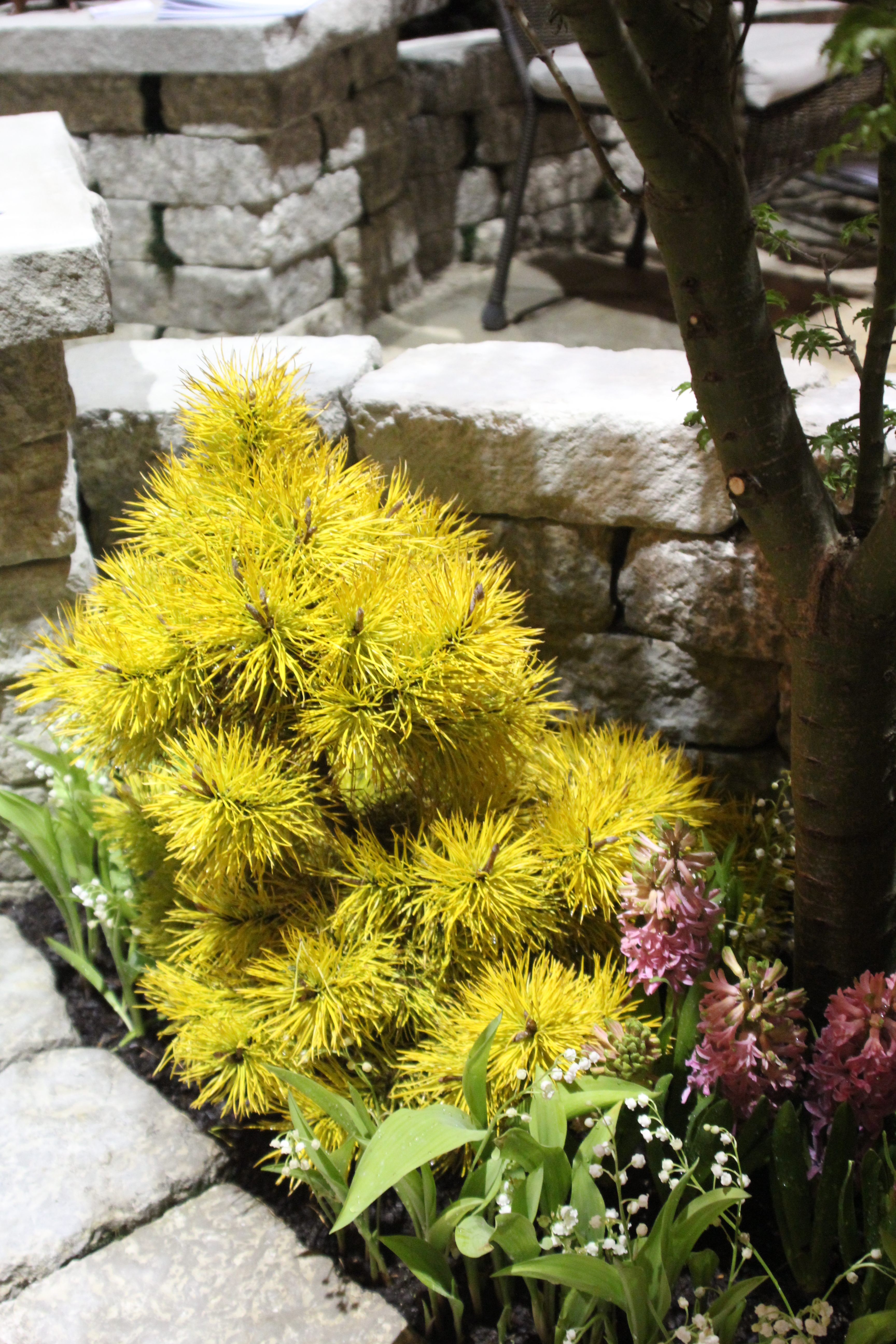 Known for its bright yellow winter color, this Pinus contorta ‘Chief Joseph’ is a winner in a snowy landscape.
Known for its bright yellow winter color, this Pinus contorta ‘Chief Joseph’ is a winner in a snowy landscape.
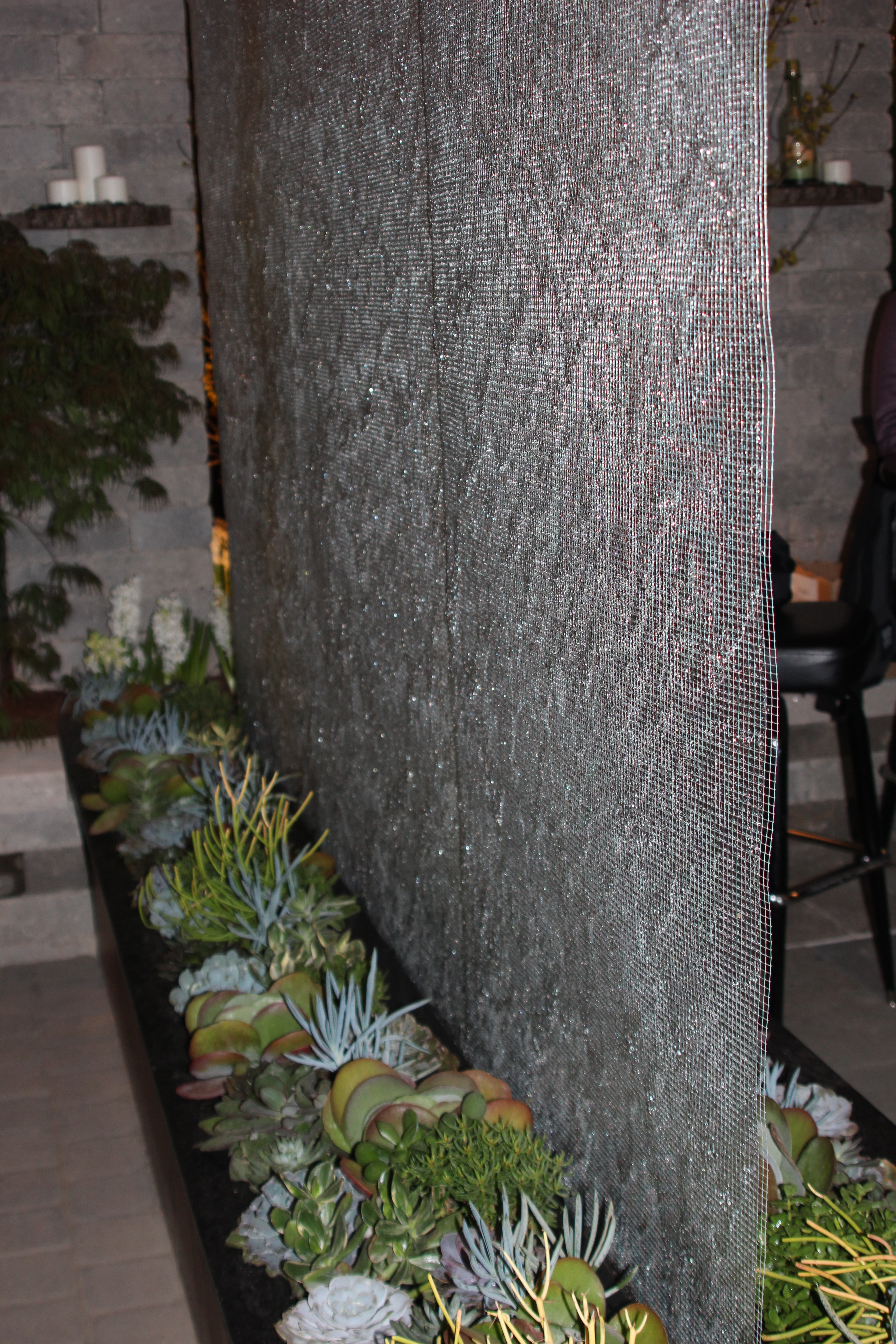 A unique water feature that brings a soothing sound and visual appeal to this outdoor bar design.
A unique water feature that brings a soothing sound and visual appeal to this outdoor bar design.
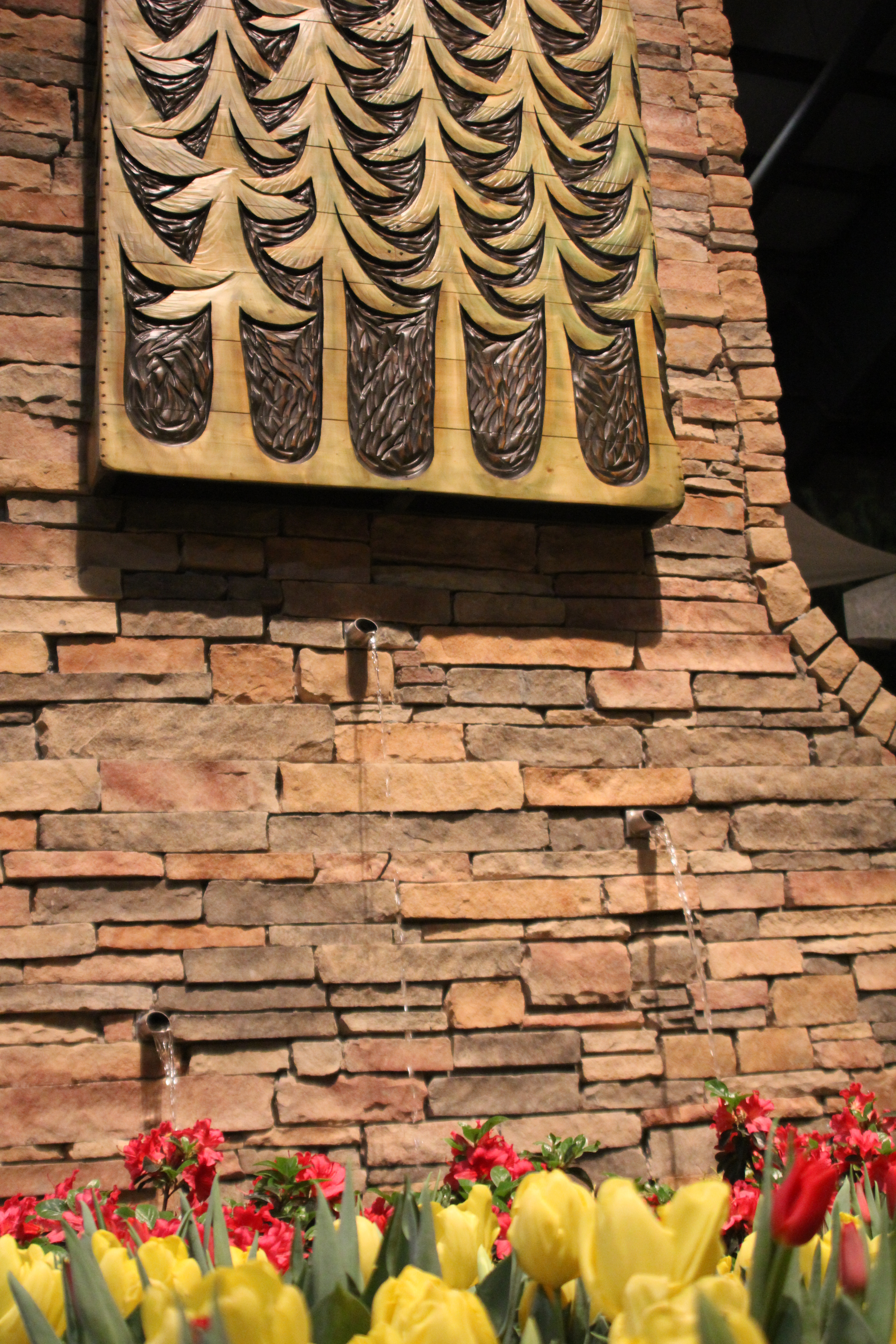 A great water feature for tight spaces and an eye-catching sculpture carved from an old wooden palette.
A great water feature for tight spaces and an eye-catching sculpture carved from an old wooden palette.
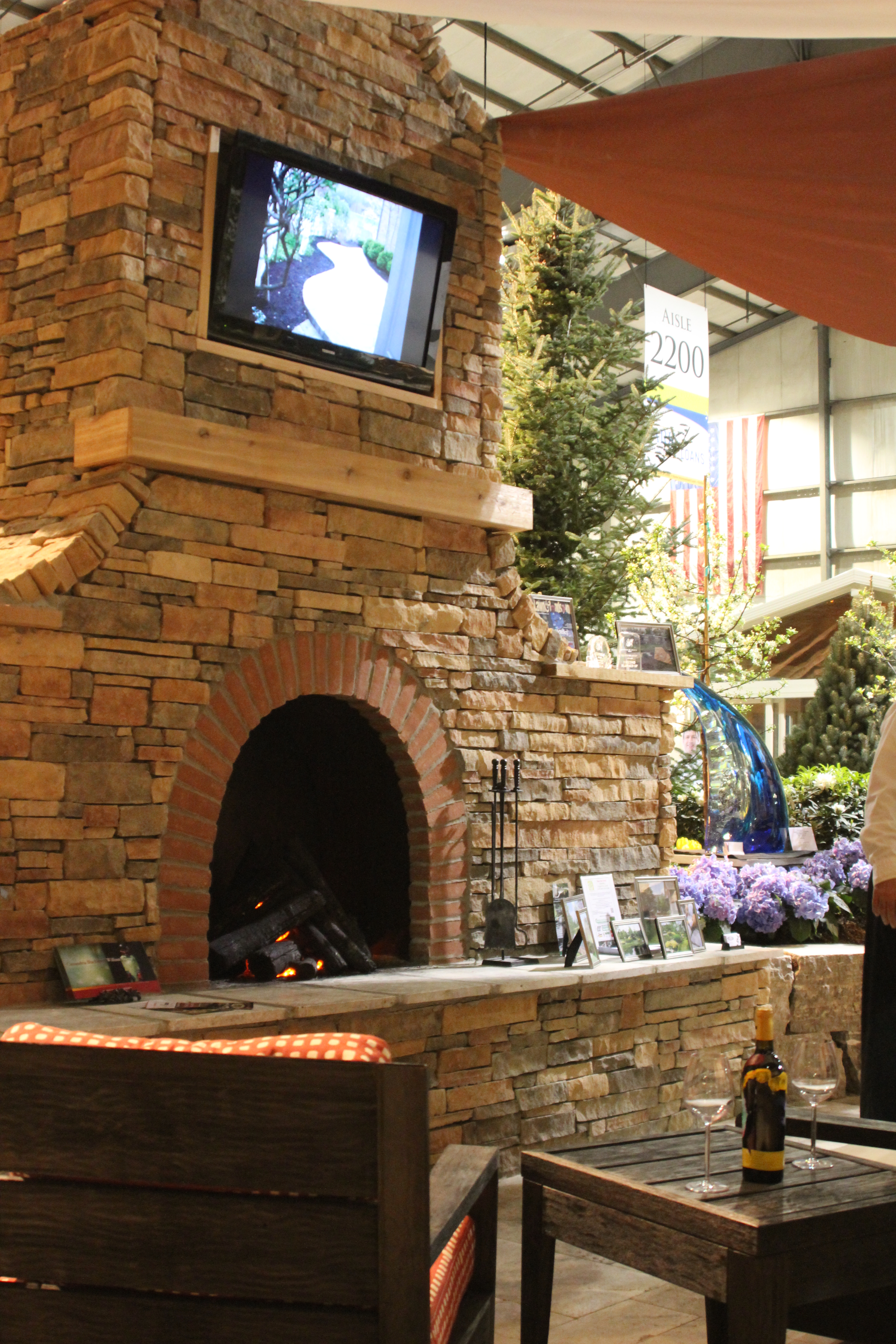 A two-sided fireplace is shaded by an attractive sail cloth.
A two-sided fireplace is shaded by an attractive sail cloth.
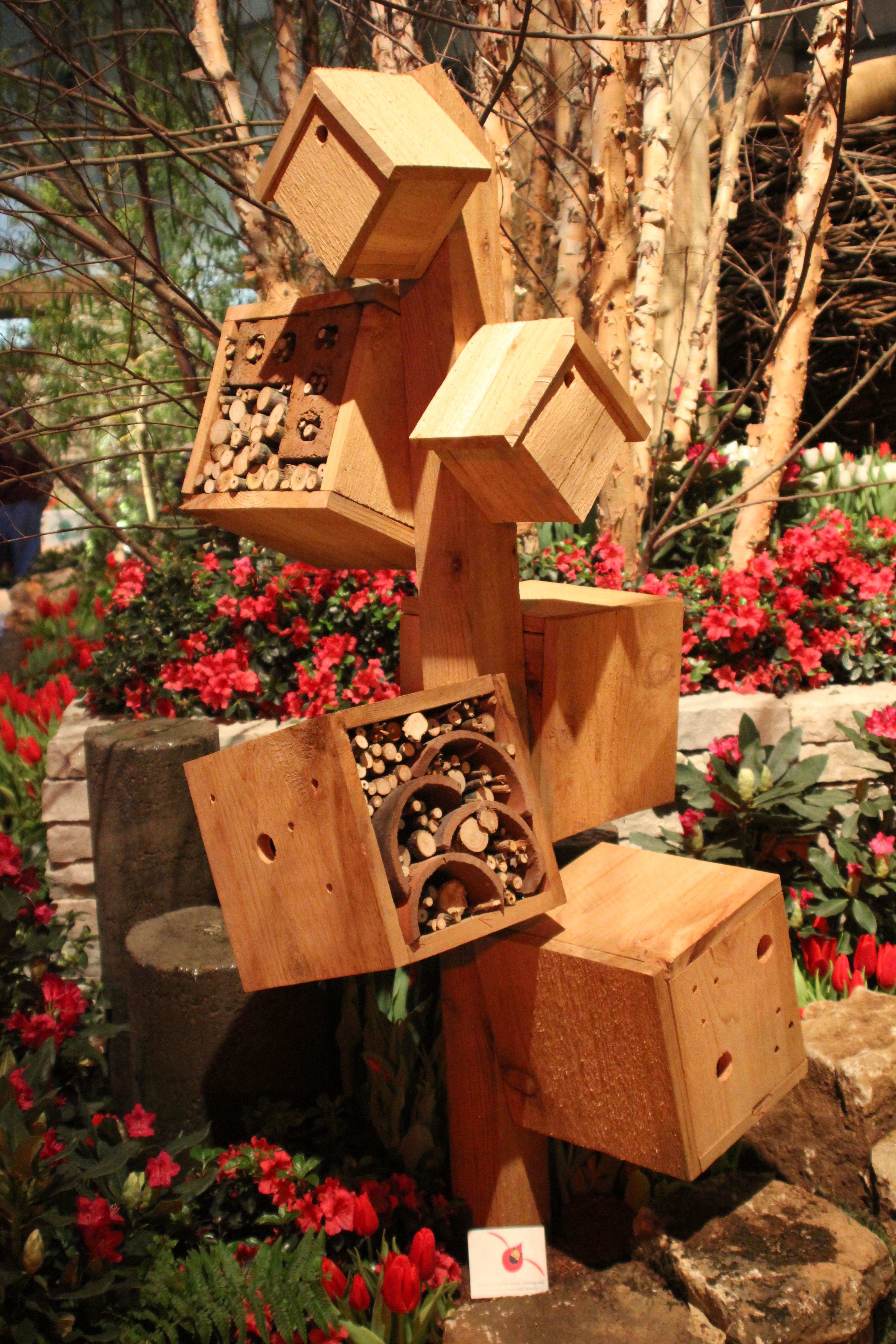 This pollinator hotel by Steven Maravich offers plenty of rooms for beneficial insects.
This pollinator hotel by Steven Maravich offers plenty of rooms for beneficial insects.
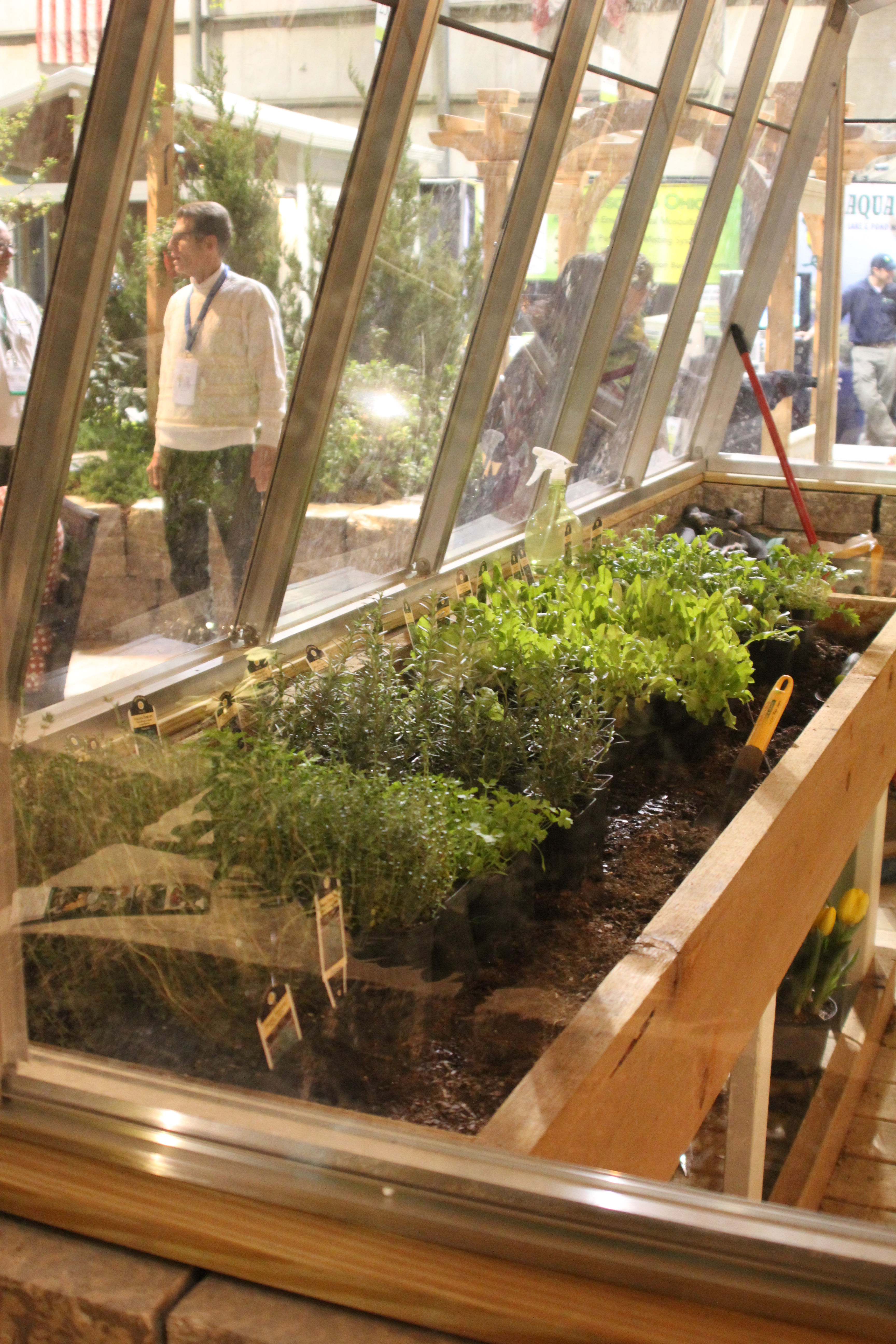 Greenhouses are becoming popular with backyard gardeners who want to grow food year-round.
Greenhouses are becoming popular with backyard gardeners who want to grow food year-round.
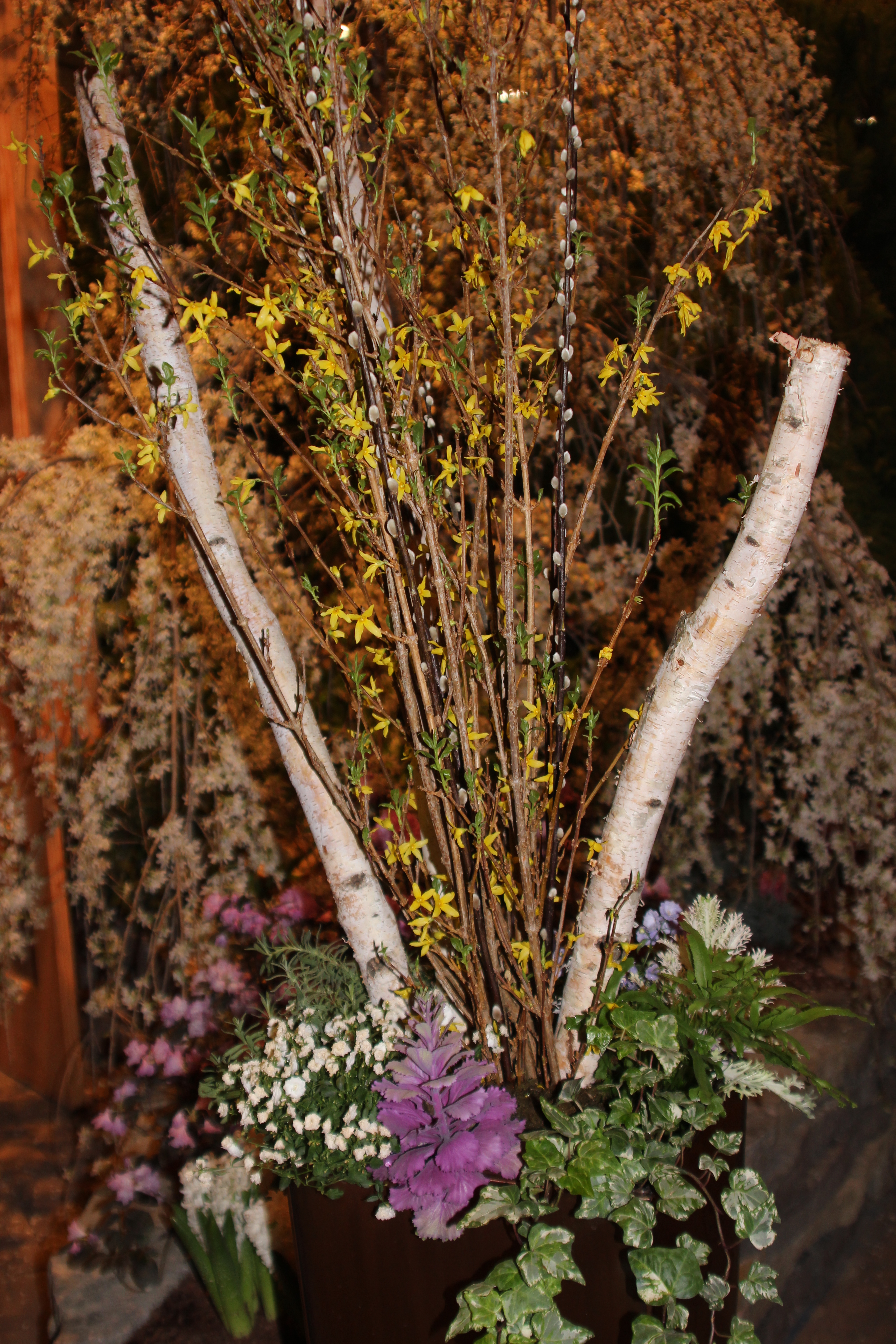 Ornamental kale is not just for fall displays. Here, Warwick’s Landscaping uses kale with birch logs, pussy willow, forsythia and ivy.
Ornamental kale is not just for fall displays. Here, Warwick’s Landscaping uses kale with birch logs, pussy willow, forsythia and ivy.
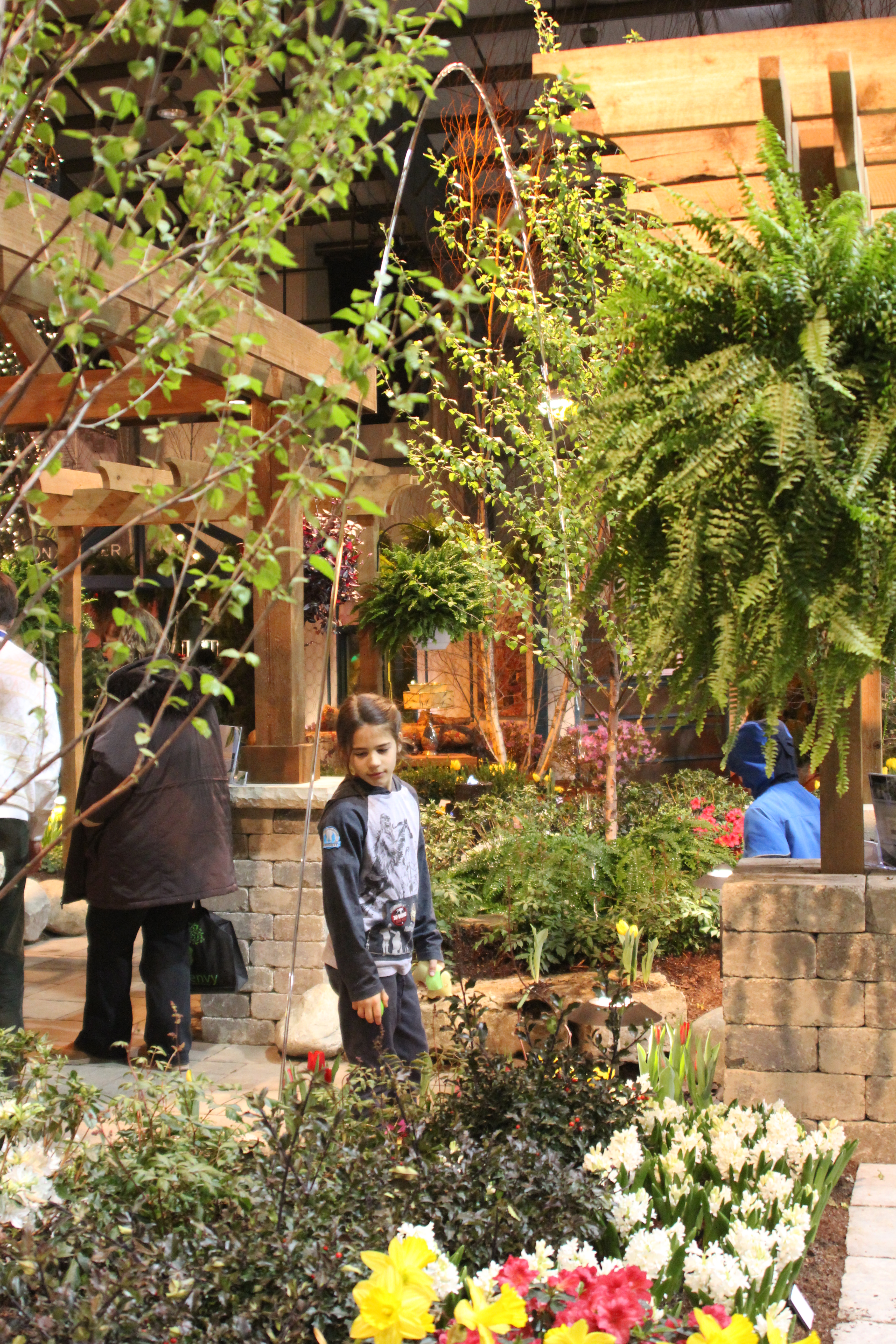 This fountain creates an arched entry to this garden design by Landscape Design Solutions.
This fountain creates an arched entry to this garden design by Landscape Design Solutions.
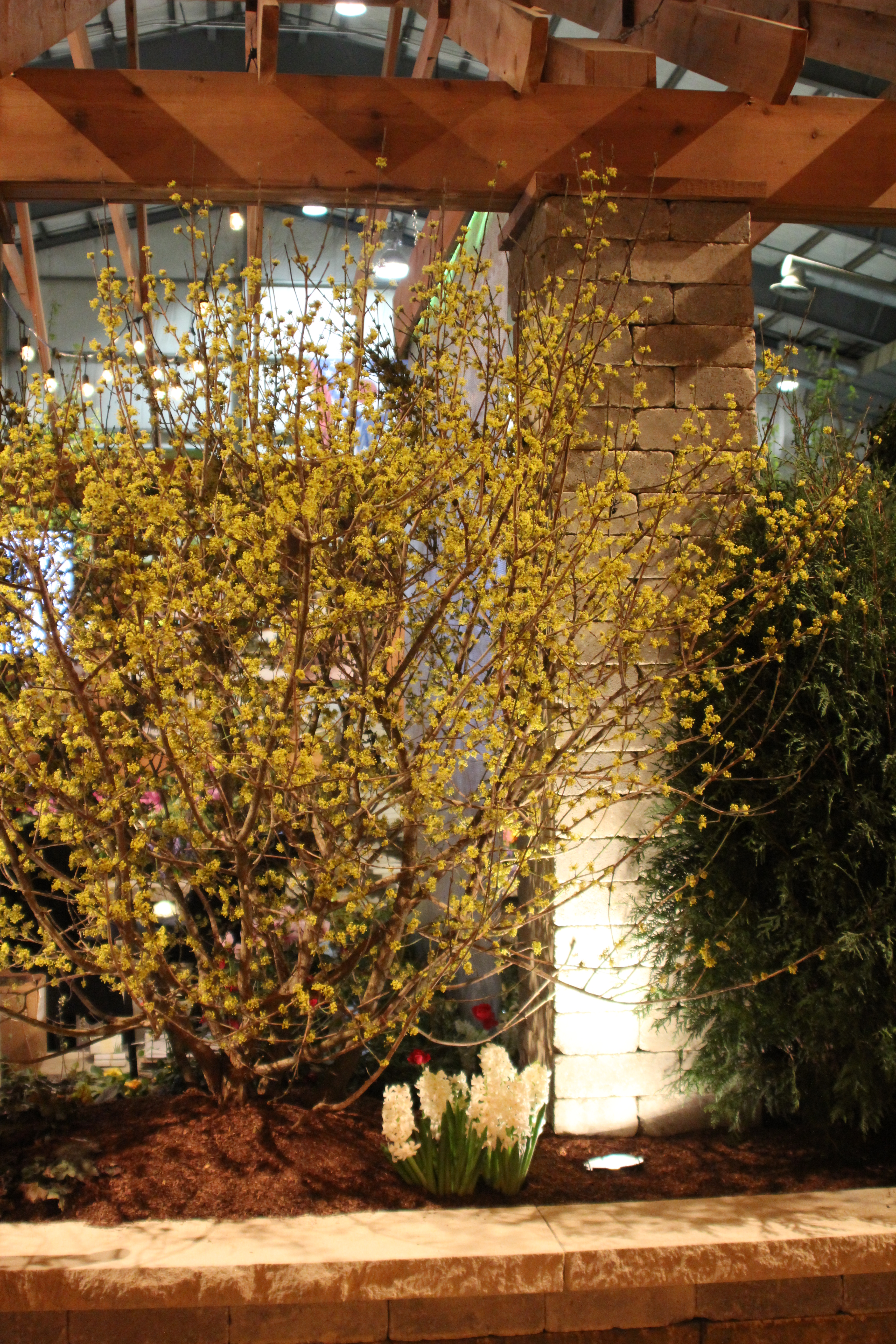 This blooming cornelian cherry dogwood (Cornus mas ‘Golden Glory’) is a crowd stopper at Warwick’s display. The multi-stemmed shrub blooms with star-like yellow flowers in later winter.
This blooming cornelian cherry dogwood (Cornus mas ‘Golden Glory’) is a crowd stopper at Warwick’s display. The multi-stemmed shrub blooms with star-like yellow flowers in later winter.
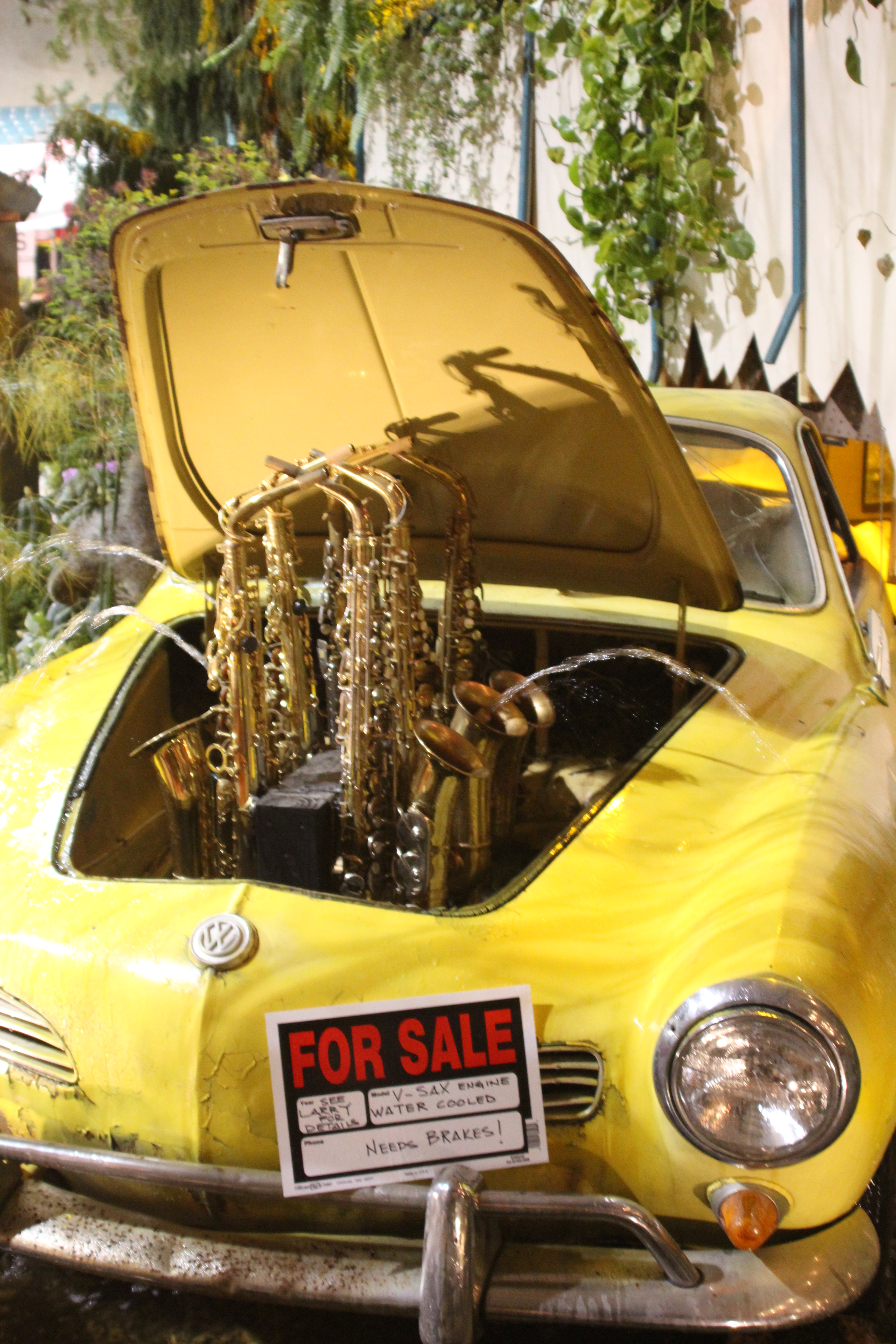 Larry Burchfield and his team at Cedarbrook Landscaping offered another fun-filled, themed garden with its “Saturday Night Fever” design. It highlights many vintage finds from this fountain of saxophones to a set of old bed springs turned into a bed of succulents.
Larry Burchfield and his team at Cedarbrook Landscaping offered another fun-filled, themed garden with its “Saturday Night Fever” design. It highlights many vintage finds from this fountain of saxophones to a set of old bed springs turned into a bed of succulents.
 It’s disco fever – or perhaps spring fever – for Teresa and Michael at the Home & Garden show.
It’s disco fever – or perhaps spring fever – for Teresa and Michael at the Home & Garden show.
by GardenLover | Feb 17, 2015 | Trendspotting
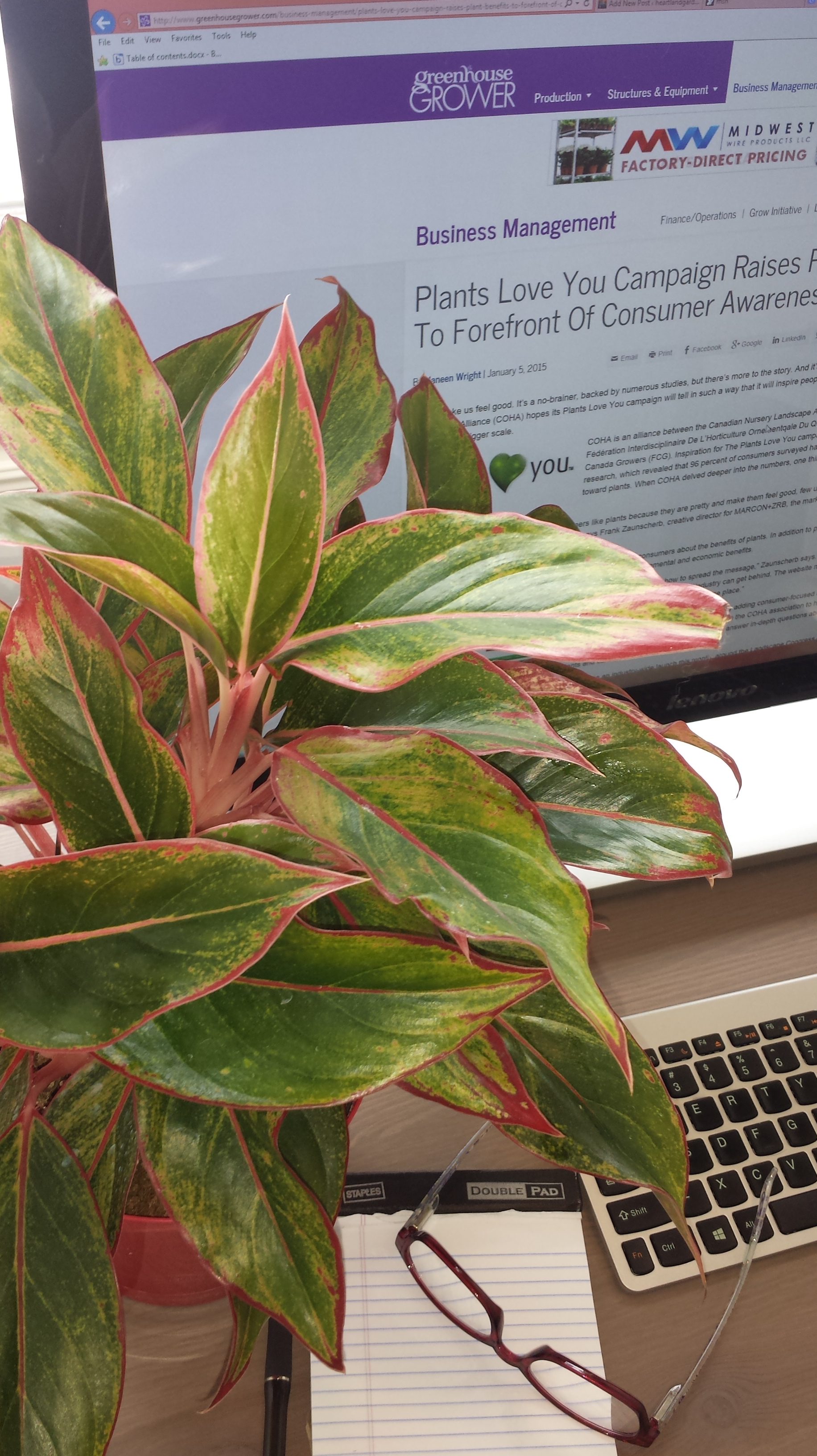 Science helps industry tout plant benefits to boost sales
Science helps industry tout plant benefits to boost sales
By Michael Leach
Brace yourselves.
Instead of being merely muddy and vaguely nerdy, we gardeners will soon appear cool and with-it to our family, friends and perhaps the rest of the world.
In order to sell more flora, the horticultural industry is touting scientific studies showing positive effects of plants. Meanwhile, interior designers are rediscovering gardens and nature and predicting such themes as trendy in 2015. (More on this in an upcoming report.)
Today we’ll look an industry campaign showing ways plants help people, from stress relieve to a better environment. (We recently discovered some of their erotic effects in Teresa’s review of Plants with Benefits.)
The sales approach is a far cry from the traditional song and dance about new varieties and bigger flowers and fruit — stuff only gardens care about. Science is proving what gardeners have always known, plants are good for you and working with them is even better.
Plants Love You — GreenhouseGrower, a horticultural industry trade magazine, reports the Canadian Ornamental Horticulture Alliance is promoting a campaign aimed at inspiring people to make plants a part of their life. The theme is Plants Love You.
The goal is “… to educate consumers about the benefits of plants. In addition to pushing plants’ aesthetic benefits, the campaign produces documented health, environmental and economic benefits.”
Plants “pay you” —Trees, for instance, score in environmental and economic ways. “They provide cooling shade that can reduce air conditioning costs, sequester carbon dioxide (the notorious greenhouse gas), while releasing oxygen, and provide windbreaks.” Don’t forget they can be beautiful and fruitful, too. 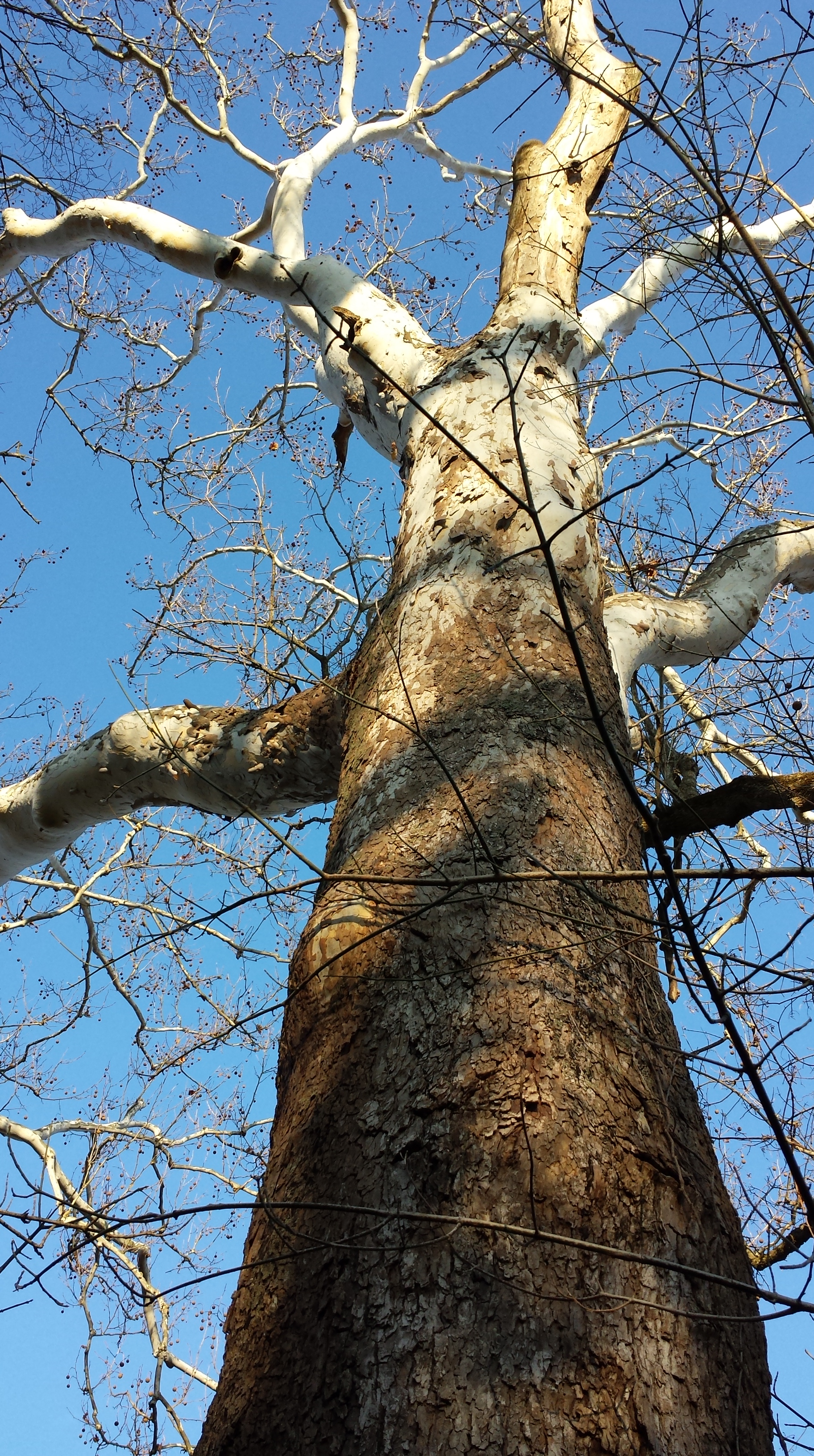
As for that humble pothos and other potted plants on countless cubicle desks — drum roll please!
Plants improve your memory — “A recent study indicated people received a 20 percent increase in memory and concentration in the presence of ornamental plants at work.” The report adds, “Researchers believe the calming influence of a natural environment increases the ability to concentrate on the task at hand. Work performed in the presence of plants was of higher quality and completed more accurately than in an environment without plants.”
One must presume these plants are in a healthy condition. Some of the potted flora we’ve seen over the years would more likely inspire depression, given their withered leaves and scrawny stature. Still, my home office is going to get much greener — before I forget again.
Helpful websites — Along with the Canadian program, a couple of Florida growers were cited for making sales from telling buyers the positives of plants. Both have websites that can help we Midwest types in buying houseplants and summer tropicals.
Check out Costa Farms and Delray Plants. The latter has its own trademarked line of “Plants with Benefits.” Those shopping for houseplants will find easy-to-access information, presented in visually appealing ways.
If you know other nurseries or garden centers with especially useful websites, please send them along.
(Writer’s note: This is another of our now-and-then posts focusing on why you H.A.V.E. to garden — to benefit your health, attitude, property values and environment.)
On Thursday at 1 p.m., Michael will answer gardening questions as part of a Garden Guru panel at the Columbus Home & Garden Show. He’ll also be leading Garden Showcase Tours at noon on several days at the show.
by GardenLover | Feb 13, 2015 | Books Notes
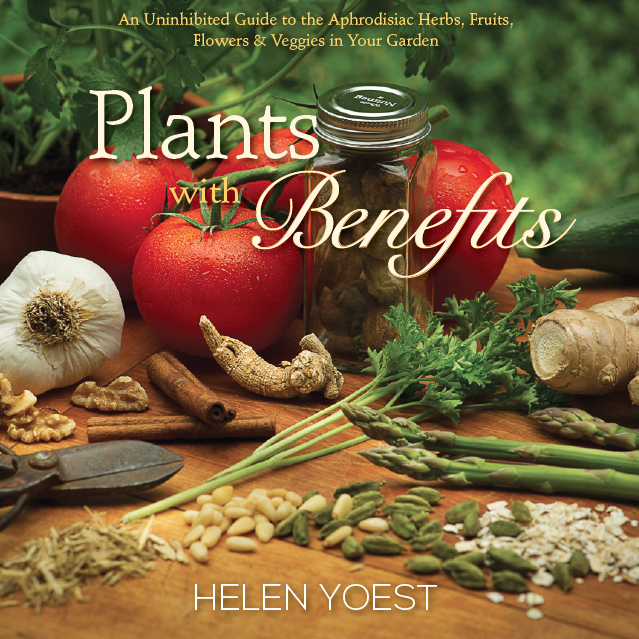
Amp Up Your Valentine’s Day with Some Sexy Plants
By Teresa Woodard
Planning a romantic dinner for Valentine’s Day? Well, seek out garden writer Helen Yoest’s intriguing book, Plants with Benefits for some helpful advice and titillating recipes.
From arugula to watermelon, she compiles an uninhibited guide to 45 aphrodisiac plants and cleverly uses this sexy topic and a good dose of humor to share the history and science lessons behind each plant.
After reading her account on lavender, I’ll definitely be planting more of this intoxicating perennial to my landscape. 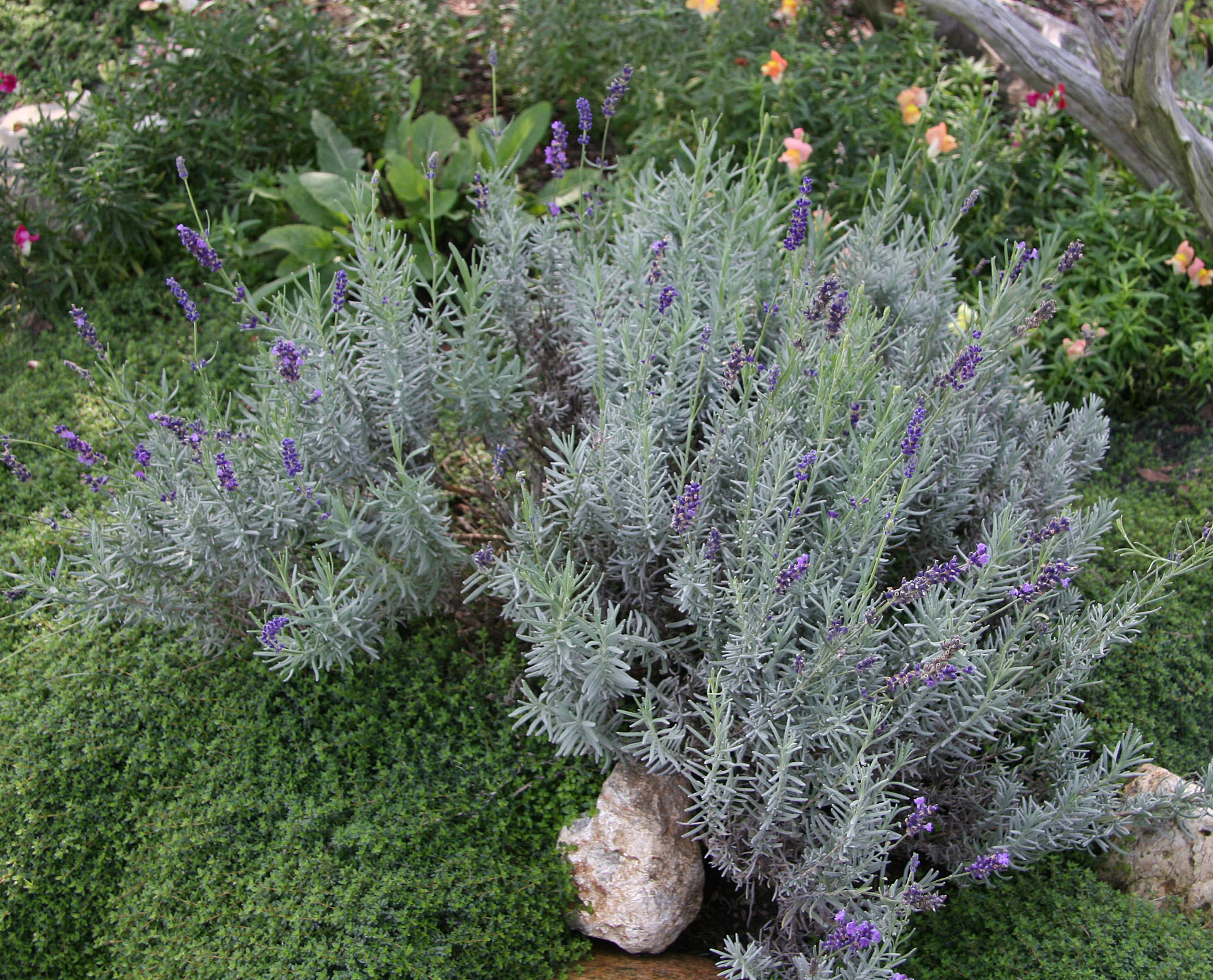 From historic days, women like the Queen of Sheba and Cleopatra knew the power of this alluring scent as they doused themselves with this love potion. More recently, Yoest says a food aroma study proved the scent’s seductive power among men. In fact, the fragrance of lavender increased participants’ blood flow by 40 percent compared to pizza (5 percent) or popcorn (9 percent).
From historic days, women like the Queen of Sheba and Cleopatra knew the power of this alluring scent as they doused themselves with this love potion. More recently, Yoest says a food aroma study proved the scent’s seductive power among men. In fact, the fragrance of lavender increased participants’ blood flow by 40 percent compared to pizza (5 percent) or popcorn (9 percent).
While the book’s lavender cookie recipe might make a good addition to a Valentine’s Day menu, I’m thinking I’ll start with a basil pesto spread. Yoest says the herb was used as a love token thousands of years ago in Malaysia, Iran and Egypt, and its aroma still “drives us wild” today.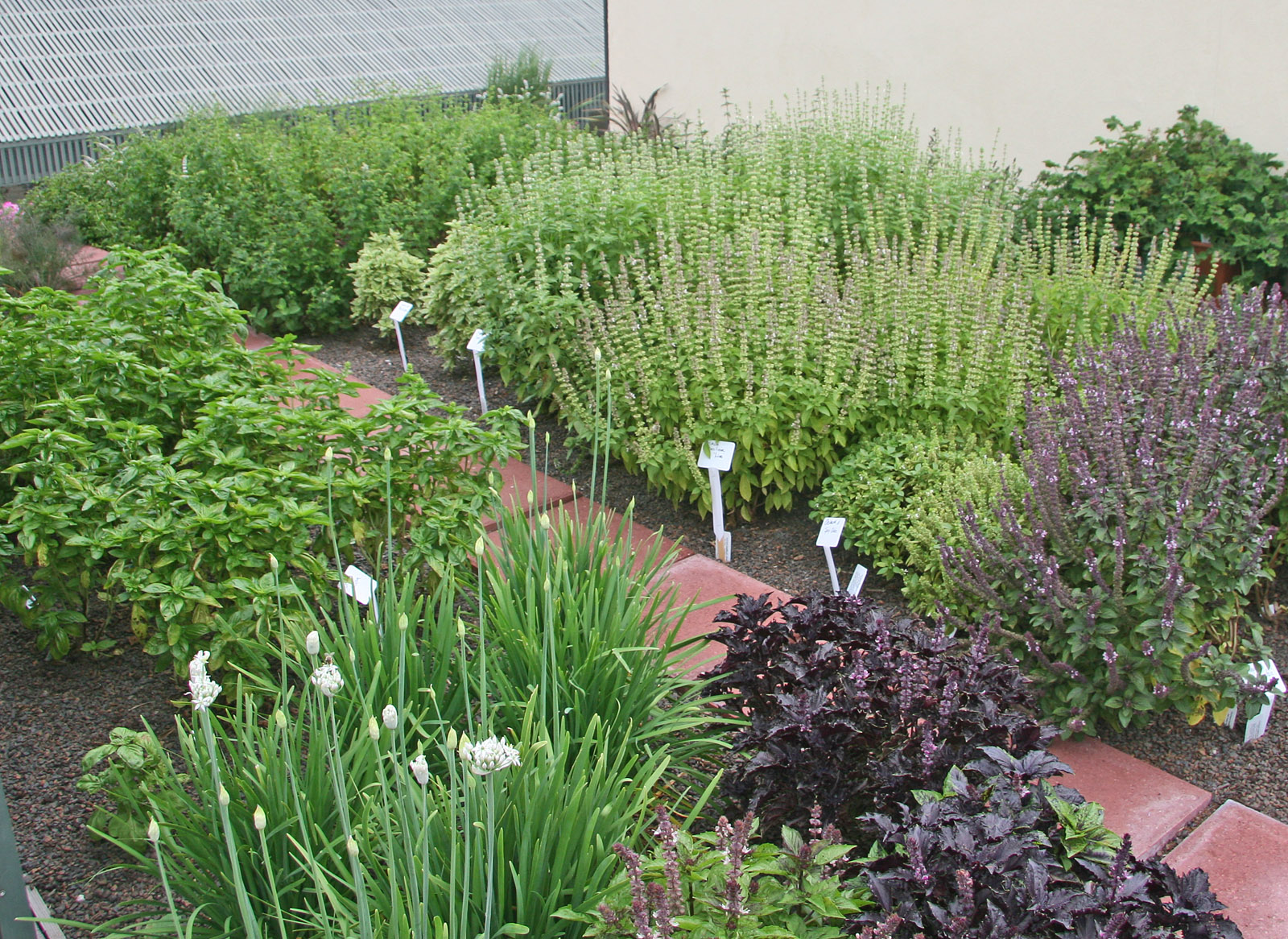
For the entry, I’ll serve up my husband’s favorite tenderloin steak with a flirtatious side dish of asparagus and morels. Yoest praises asparagus for its suggestive qualities and hormone-boosting power. Morels, once named Phallus exculentus by father of taxonomy Carl Linnaeus, is praised for its warming effects much like cayenne and its power-packed nutrients.
And of course, for dessert, chocolate may be the classic choice, but I think I’ll have more luck with a honey treat, like Honey Apple Crisp. Yoest writes how Cupid, the trickster, dipped his arrows in honey before aiming at lovers.
Check out Plants with Benefits for planning your own Valentine’s Day menu and planting a love-filled garden.
“A plant that helps us to love is a plant worth having,” says Yoest.
by GardenLover | Feb 11, 2015 | Catch Us
Catch Debra at the 36th Annual conference of the Ohio Ecological Food and Farm Association (OEFFA). She will be offering a two hour workshop on Permaculture: Fitting It into the Context of Your Life. There is still space at this eclectic conference which is this weekend, February 14th and 15th in Granville, Ohio.
Here is a description from OEFFA’s website: “With almost 100 workshops to choose from throughout the weekend, OEFFA’s conference has something for everyone to love! Eighteen workshop tracks will be offered, covering everything from farm and garden basics, commercial production, food and farm policy, research, sustainable living, and much more!”
The exhibition hall is filled with local producers of food, and items for the home, garden and farm. And, wait, there’s more: for readers there is a bookstore. Check it out!
by GardenLover | Jan 29, 2015 | Books Notes
Curl Up with A Good Book . . . Or Two
By Debra Knapke
It’s another cold evening and instead of curling up with a good book, I am writing about two good books that I have had the pleasure to peruse.
Garden-pedia
We use words to communicate, but one person’s definition may be greatly or ever so slightly different from another’s. And, there may be several meanings for a word. Capturing and documenting the meanings of words and concepts is what drives the creation of dictionaries and encyclopedias. The Ohio team of Pamela Bennett and Maria Zampini offers us a lexicon for the modern gardening world in Garden-pedia.
All entries have a concise definition, and most include an expanded explanation of the term or concept. This is the fun part, because here Pam and Maria discuss controversies and variations on a theme. Here is where the book shines. Anyone can write a definition, but it takes years of experience to offer concise, accurate information and advice for the beginner to intermediate gardener. And, that they have in abundance.
For instance, there is a lot of discussion over the definitions of the words/concepts: native plant and nativar. They are, respectively: “a plant that occurs naturally in a particular region, ecosystem, or habitat without human intervention” and “a cultivar or hybrid of a native plant”. The definitions seem straightforward, but the “story” behind them isn’t. Nativar is a recently coined word and one that has riled some designers and ecologists who work with native plants. Check out Garden-pedia for the short backstory.
The pictures are excellent and add to the overall attractiveness of the book. This isn’t a book you take out of the library once; it’s a book to own.
The New American Herbal
Another beautiful book is Stephen Orr’s The New American Herbal. A common, but unwarranted, complaint about herbs is that they are not beautiful or colorful. This book counters this with artful pictures of herbs and mouthwatering images of herb-filled food. I can’t wait for late spring when my green garlic is up as it is an essential ingredient for the Socca Pancake on page 190. And in summer I will make the Baked Stuffed Tomatoes with Oregano with fresh, sun-warmed heirloom tomatoes.
The first sixth of the book covers general topics and specialty herb groups. The rest of the book is plant portraits and recipes. The usual species are covered along with a sampling of herbs that less represented in general herbal books like muitle (Justicia spicigera) from Mexico, ngò om (Limnophila aromatica) from Viet Nam and Indian hemp/marijuana (Cannabis sativa). Each herb is categorized as to its basic uses, safety and growing tips. Other content varies with respect to its history, expanded use information and available cultivars.
This book seems to want to be everything herbal. And as much as I enjoyed reading it, I feel that a beginner might be overwhelmed by the amount and organization of the information. And, if you want pictures of the whole plant, you will need to look in another reference or log onto the internet. This book appears to be for the more advanced “herbie”. Although, it could be one of those books that you grow into.
A final thought
Both are references books, both display the voices of the authors and both go well with a cup of tea.
 Known for its bright yellow winter color, this Pinus contorta ‘Chief Joseph’ is a winner in a snowy landscape.
Known for its bright yellow winter color, this Pinus contorta ‘Chief Joseph’ is a winner in a snowy landscape. A unique water feature that brings a soothing sound and visual appeal to this outdoor bar design.
A unique water feature that brings a soothing sound and visual appeal to this outdoor bar design. A great water feature for tight spaces and an eye-catching sculpture carved from an old wooden palette.
A great water feature for tight spaces and an eye-catching sculpture carved from an old wooden palette. A two-sided fireplace is shaded by an attractive sail cloth.
A two-sided fireplace is shaded by an attractive sail cloth. This pollinator hotel by Steven Maravich offers plenty of rooms for beneficial insects.
This pollinator hotel by Steven Maravich offers plenty of rooms for beneficial insects. Greenhouses are becoming popular with backyard gardeners who want to grow food year-round.
Greenhouses are becoming popular with backyard gardeners who want to grow food year-round. Ornamental kale is not just for fall displays. Here, Warwick’s Landscaping uses kale with birch logs, pussy willow, forsythia and ivy.
Ornamental kale is not just for fall displays. Here, Warwick’s Landscaping uses kale with birch logs, pussy willow, forsythia and ivy. This fountain creates an arched entry to this garden design by Landscape Design Solutions.
This fountain creates an arched entry to this garden design by Landscape Design Solutions. This blooming cornelian cherry dogwood (Cornus mas ‘Golden Glory’) is a crowd stopper at Warwick’s display. The multi-stemmed shrub blooms with star-like yellow flowers in later winter.
This blooming cornelian cherry dogwood (Cornus mas ‘Golden Glory’) is a crowd stopper at Warwick’s display. The multi-stemmed shrub blooms with star-like yellow flowers in later winter. Larry Burchfield and his team at Cedarbrook Landscaping offered another fun-filled, themed garden with its “Saturday Night Fever” design. It highlights many vintage finds from this fountain of saxophones to a set of old bed springs turned into a bed of succulents.
Larry Burchfield and his team at Cedarbrook Landscaping offered another fun-filled, themed garden with its “Saturday Night Fever” design. It highlights many vintage finds from this fountain of saxophones to a set of old bed springs turned into a bed of succulents. It’s disco fever – or perhaps spring fever – for Teresa and Michael at the Home & Garden show.
It’s disco fever – or perhaps spring fever – for Teresa and Michael at the Home & Garden show.





